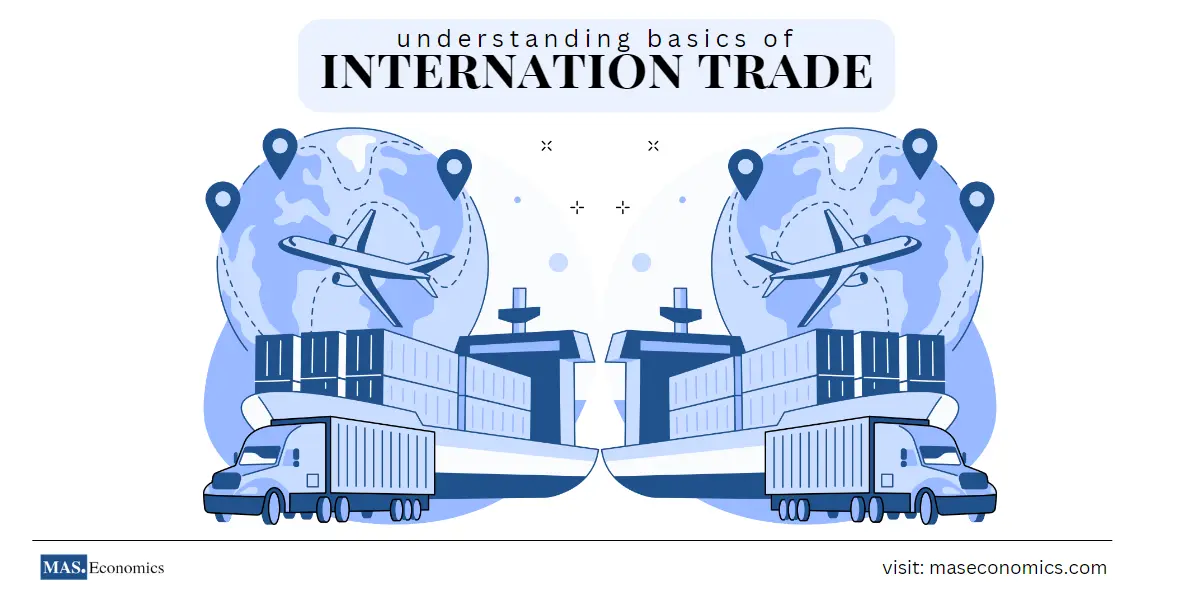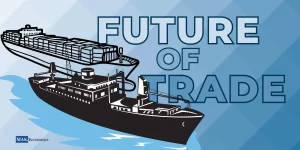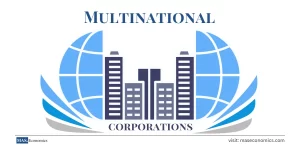This post will cover the basics of international trade and how it can benefit countries worldwide. We will discuss the advantages of specialization and increased productivity that comes from engaging in international trade and the potential risks associated with it. We will also look at how countries can ensure they engage in positive and mutually beneficial trade practices and the role of the WTO.
What is International Trade
International trade is the process of exchanging products and services between two or more countries. It is influenced by various factors such as economies of scale, comparative advantage, absolute advantage, and competitive asymmetry in a given market. International trade is facilitated through mechanisms such as tariffs, export subsidies, import licensing, and quota agreements. It allows nations to benefit from access to resources that are scarce domestically and can ultimately foster economic growth.
Before diving deep into international trade, let us first define a country that does not participate in trade.
Close Economy
A closed economy is an economic system in which a country or region operates without participating in international trade or receiving foreign investments. In this type of economy, all production and consumption decisions are made within the market without external influence from international entities. A closed economy is typically limited by its resources and production capacity, leading to higher prices for foreign goods due to a lack of competition from imports.
This type of economy is also referred to as autarky.
A country that does not rely on outside help for goods or services is in a state of equilibrium. That means the demand and supply are balanced, so there is no shortage or surplus. To find out how much demand there is within the country, we have to add up three things: consumption (what people buy for everyday life), investment (when businesses decide to use the money to make more money), and government spending (what the government spends on things like infrastructure). When all those three things are added together, it gives us the national income level. In other words, it tells us how much money everyone in the country earns.
To calculate the aggregate demand, you have to add up three different things: consumption (C), investment (I), and government spending (G). You get the country’s national income level (Y) when you add them all up.
Y = C + I + G
Before we explain how to calculate aggregate demand for countries participating in international trade, let us first define fundamental trade theories.
Adam Smith’s Absolute advantage
Absolute advantage theory explains how one country can have an edge over another by producing a good or service more efficiently. This can relate to production processes that are relatively more efficient or to economies of scale due to market size. Nations with absolute advantages in certain products may have an edge in international trade, allowing them to outcompete their rivals who lack these advantages.
David Ricardo’s Comparative advantage
This theory states that countries should specialize in producing and exporting goods or services for which they are relatively the most productive and import other goods or services from countries that can produce them relatively more efficiently. This allows countries to maximize their productivity and minimize costs, resulting in more significant economic growth. Additionally, by focusing on specialization instead of direct competition with other countries, Ricardo’s theory helps reduce conflict in international trade relations.
Open economy
An open economy participates in international trade and receives foreign investments. It benefits from greater access to resources and capital goods, allowing it to specialize in specific industries or sectors of the economy. Open economies can also take advantage of economies of scale, leading to increased efficiency, lower prices, and improved quality of life. Through increased competition in the global market, open economies experience faster economic growth than closed economies due to their ability to access goods and services unavailable domestically.
In an open-market economy, countries are allowed to buy and sell goods and services from other countries. This means the equation for equilibrium is slightly different from a closed-market economy. In addition to consumption (C), investment (I), and government spending (G), we also need to consider net exports (NX). Net exports measure how much of a trade surplus or deficit a country has. A positive number means the country is making money by selling more to other countries than it buys. In contrast, a negative number means the country loses money because it buys more from other countries than it sells. These factors must be considered when figuring out the economic balance of any one country.
Y = C + I + G + NX
Economists Eli Heckscher and Bertil Ohlin noticed that some countries have a lot of factories and machines (capital) while others have more people (labor). This means those with lots of capital can make capital-intensive products like cars, while those with lots of labor can make labor-intensive products like clothes. More competition from foreign companies means that the most efficient ones will do better, while less efficient ones may find it hard to stay in business. This encourages higher quality products, new technologies, and a more comprehensive selection of goods.
Everyone wins when one country concentrates its resources on the things it makes best and trades with other countries for its goods and services. This specialization leads to higher productivity levels, lower consumer costs, increased revenue for the country, and a more robust global economy overall.
According to UNCTAD’s latest report, despite a projected record high of $32 trillion in global trade for 2022, economic prospects for 2023 are being revised downwards due to the year’s second-half slowdown, as well as factors such as high energy prices, increasing interest rates, inflation, and geopolitical tensions (conflict in Ukraine).
Drawbacks
Engaging in international trade opens up countries to both potential benefits and risks. While being able to buy and sell goods and services from other countries often gives a country an economic advantage, it also means that it is more vulnerable to events occurring in those other countries. These factors could significantly impact the economy in the event of a natural disaster or political unrest. The COVID-19 pandemic has further highlighted this risk, as many countries are seeing their economies suffer significantly due to travel restrictions and supply chain disruptions. By considering all these risks, countries can ensure that they engage in positive, mutually beneficial trade practices that provide sustainable economic growth for both parties.
As the global economy has become increasingly interconnected, countries have benefited from increased access to goods and services worldwide. However, this also makes them more vulnerable to disruptions in faraway places. The recent COVID-19 pandemic is a perfect example of how an event like this can cause supply chain delays and increase prices for goods. Despite these risks, international trade has brought immense economic benefits to countries engaged in it. Nations can specialize in what they are best at producing. As a result, they can produce more goods with fewer resources – leading to greater efficiency and lower prices for consumers worldwide.
Free Trade VS. Protectionism
Free trade is an economic system in which goods, services, and capital flow freely between countries without governmental interference, such as duties, tariffs, or subsidies. This type of arrangement encourages open markets, which are beneficial to businesses and consumers alike as prices become more competitive.
Protectionism is a policy that seeks to protect domestic industries from international competition by implementing restrictions (such as tariffs) on imports or providing subsidies to local producers. Governments may use this type of policy to support infant industries and protect their vulnerable citizens from the adverse effects of free trade. The overall goal of protectionism is to secure favorable terms of trade for the protected industry in order to achieve a better balance of payments.
The World Trade Organization (WTO) ensures that everyone trades pretty and openly and that no one country takes advantage of another. The WTO also prevents protectionism, which would be a bad thing because it could cause harm to the global financial crisis. Even though some countries have trade policies that are not very open, if those policies are changed, people worldwide can benefit from billions of dollars. To help everyone involved in trading between nations get along better and find solutions that work for everyone, it is essential to consider what is best for everyone.
Conclusion
International trade is a complex process that can be difficult to understand without some knowledge of economics. In this article, we have explained the basics of international trade and how it benefits countries worldwide. We have also discussed some of the risks associated with global trade and highlighted the importance of the World Trade Organization in ensuring a fair and open trading system. By understanding these concepts, businesses and individuals can make more informed decisions about whether or not to participate in international trade.




